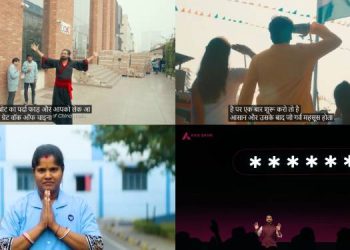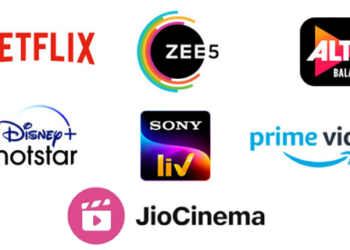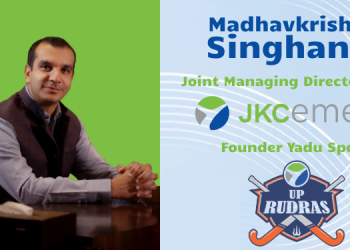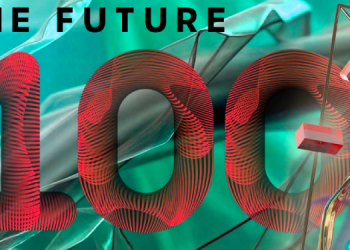Birla Cellulose represents the Pulp and Fiber business of the Aditya Birla Group. Birla Cellulose’Liva is one of the biggest players when it comes to sustainable fabrics in India. Being primarily B2B, the brand has taken it upon themselves to build a connect with the end consumer through multiple marketing activities. Birla Cellulose commands a major world market share in the Manmade Cellulose fiber domain.
MediaNews4U interacted with ShardahUniyal, Global Head of Birla Cellulose’ branding & communication, to understand the need and course of connecting with the end user for a B2B brand.
Excerpts:
1) Could you brief us on the Sustainable Fabric market in India and what is Liva’s share in it?
Sustainable fashion is gaining its importance with time. The industry’s overall fabric consumption is about approx 90 million tonnes every year, out of which polyester has its share of 40-45 mil ton, cotton has 30 mil ton whereas sustainable fabrics like Viscose has its share at about 5-6 mil ton. When it comes to sales of sustainable garments, 3.5 cr garments with Liva tags had been sold last year and the number is expected to go up to 4.5 cr in the coming year. Hence in terms of the total size of the sustainable sector, Liva has a considerable share in it. The number might seem small at first, but we have to keep in mind that we’re still building on the sustainable fashion sector. We foresee this segment to have a steady growth over the next couple of years and our aim is to be the leader in the same.
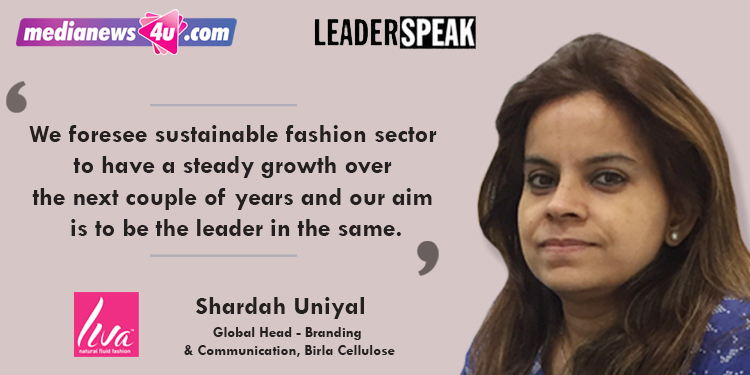
2) What are the strategies adopted by you to connect with the end consumer?
We are basically a B2B brand with good relations with our credited partner forums as well as other co-brands. We are majorly focusing on bring in the awareness about sustainability through fashion and how as a brand we provide the same through our fabric. Consumers have a preconceived notion about sustainable fashion being boxy, unflattering and harsh on the skin. Our aim through our marketing initiatives is to debunk these myths. The focus of our installations and activations is on displaying the fluidity and lightness of the fabric. Our recent activities of partnering with FDCI fashion week at Delhi, mall dropdowns and dancing fabric installation at a popular mall in Mumbai are few of the examples of the activations that help us in positioning ourselves as a fluid fashion brand. Additionally post the launch of our eco enhanced Livaecofabric, we have introduced a plantable tag called the Green tag which again focuses on educating the consumer on sustainability in fashion. This plantable tag, which is a seedable plant, requires to be sowed in soil, and in a time of 5-6 days a plant will grow out.
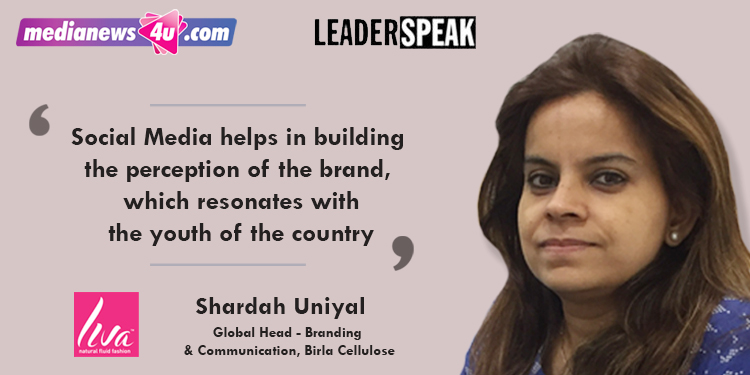
3)Which according to you is the favourite Media Vehicle for Liva and Why?
We do believe the future of advertising and communication is digital. However, at this point, we have a mix of vehicles which serve different purposes. We focus on social media because India is consuming information on social media at a very high rate. It helps in building the perception of the brand, which resonates, with the youth of the country. Additionally, we believe in on ground activations, which may be a narrow way of communicating, but it brings us in direct contact with our consumers.
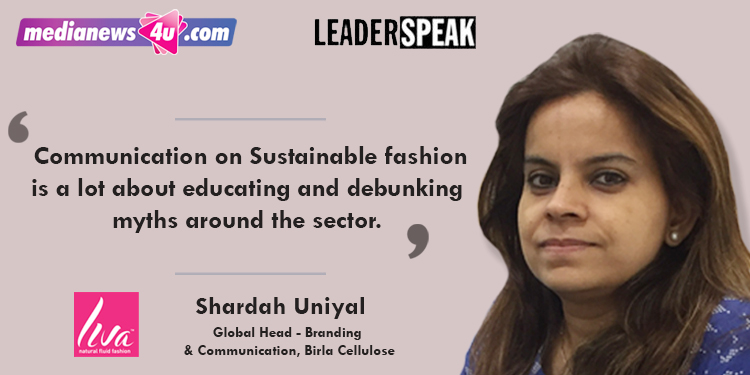
4)Do you think Technology has influenced the game of branding and communication, How?
Technology has definitely changed the game altogether! In terms of branding and communication, technology has made targeting a particular audience extremely easy. It has also given rise to the kind of creativity we’ve never seen before. A brand can be integrated in multiple ways across media channels. With new media channels coming up, Instagram leading the social media game – branding and communication has to be done in a way which is relatable yet organic to some extent for it to resonate with the users.
5) Which are your most memorable and challenging brand-marketing task during your journey so far?
There have been many such marketing activities that have been fruitful for us, to name a few our recent activity where we had a 27-foot long fabric installed at a mall in western side of Mumbai. The activity received a good reaction from the mall visitors and consumers as well. The installation focused on highlighting to display Liva’s fluidity as a fabric by installing a 27-foot long fabric, which appeared to be hanging midair. With the use of computerized programmed fans this was made possible and the activity was a success. The fabric’s movement was monitored by the gesture of a human hand as the installation had touch sensors. This proved to be one of the unique activities by LIVA to gain a massive attention from the mall visitors.
In terms of communicating, it’s always a challenge for brands who are trying to establish a new segment. Sustainable fashion is still at a very nascent stage in India, hence communicating is a lot about educating and debunking myths around the sector.
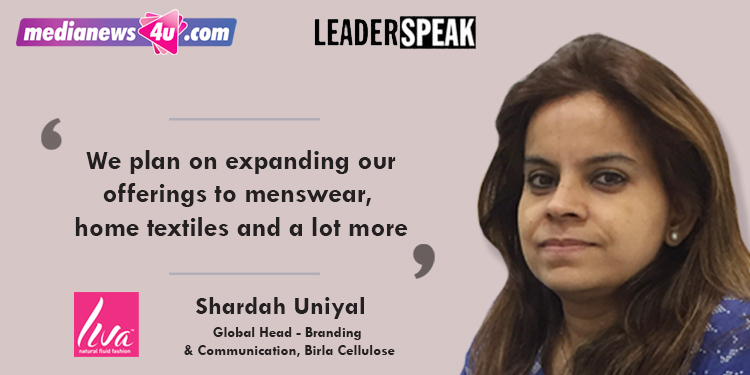
6) What is your future plans for Liva and Birla Cellulose?
We plan on expanding our offerings to menswear, home textiles and a lot of more. We also plan on launching newer sustainable fabrics in the future. Additionally, investment has been made to expand our production capacity in line with the projected growth.


